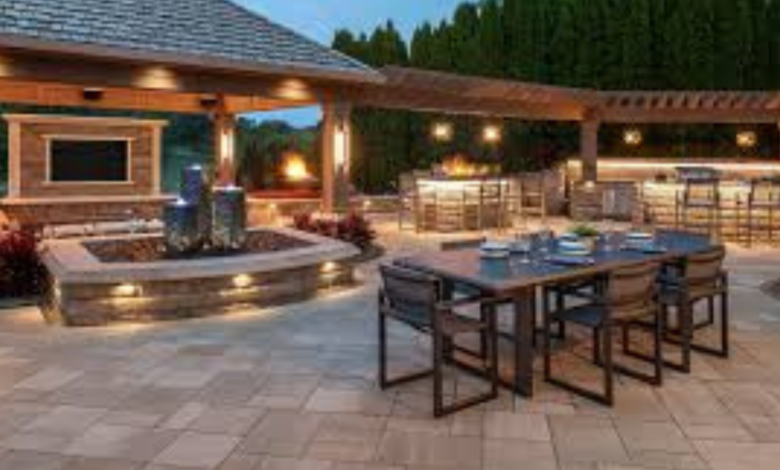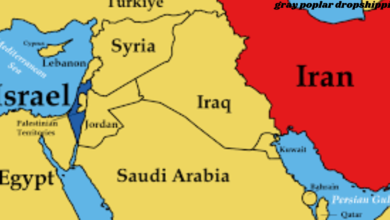Transform Your Space with Inspiring Outdoor Projects

Introduction to Outdoor Projects
In today’s fast-paced world, many people overlook the importance of outdoor spaces. However, well-designed outdoor areas are vital in enhancing the quality of life, offering a peaceful retreat, and even increasing the value of your property. Outdoor projects allow you to reimagine your space, transforming it into a functional and aesthetic haven. Whether you’re looking to create a serene garden or a lively entertainment zone, outdoor projects cater to all kinds of desires.
Outdoor projects also provide a unique opportunity to personalize your environment. From small patio upgrades to full-scale landscaping overhauls, the possibilities are limitless. With the right approach, outdoor spaces can become extensions of your indoor living areas, creating a harmonious flow between the two. These projects serve multiple purposes: they increase curb appeal, offer areas for relaxation, enhance social interactions, and often contribute to sustainability through eco-friendly designs.
One of the most compelling aspects of outdoor projects is their versatility. There are plenty of options available, from DIY home improvement ideas to hiring professional contractors for more elaborate designs. The growing popularity of outdoor living spaces has led to an increase in available resources and inspiration, helping homeowners find solutions that best suit their needs and budgets. Whether you’re looking for functionality, beauty, or sustainability, outdoor projects have something to offer for everyone.
Planning Your Outdoor Project
Planning is the first and most crucial step in any successful outdoor project. Before diving into the design process, it’s important to evaluate the size and scope of the space you have. Are you working with a small balcony, or do you have the luxury of an expansive garden? The size of the space will directly influence the design choices, budget, and the complexity of the project.
The next step in planning is setting clear goals. What do you want your outdoor space to achieve? Do you want a tranquil garden to unwind, a functional area for entertaining guests, or a child-friendly space for the family? Once you have a clear vision, you can begin breaking down the project into manageable tasks. A budget is a crucial element of this phase. Calculate the costs involved and plan for unexpected expenses. Proper planning also includes creating a realistic timeframe. Outdoor projects can take anywhere from a weekend to several months, depending on the scale, so it’s essential to align your expectations with the time and resources available.
Another important consideration is the local climate and weather conditions. These factors influence the types of plants you can grow, the materials you should use, and how much maintenance your space will require. Be sure to research the best landscaping practices for your region and consult with experts if needed. Additionally, some projects may require permits, such as building structures or installing water features. Always check with local authorities to ensure that your project complies with regulations, as failing to do so can lead to delays or fines.
Creative Outdoor Project Ideas
A. Landscaping and Gardening
Landscaping and gardening are often the heart and soul of outdoor projects. They can be as simple as planting a few flowers or as complex as transforming an entire yard into a botanical paradise. Landscaping provides an opportunity to personalize your space, adding character and charm to your home’s exterior.
If you are working with a large area, consider adding structured flower beds, shrubs, or even trees. These elements not only beautify the space but can also serve functional purposes, like providing shade or privacy. For smaller spaces, vertical gardening is an excellent solution. Installing wall planters or creating a vertical garden can save space while adding greenery to your environment. Another popular trend is xeriscaping, which involves using drought-tolerant plants to create a low-maintenance and water-efficient landscape.
For those with a passion for sustainable living, incorporating edible plants into your garden is a great idea. Herb gardens, vegetable patches, and fruit trees offer beauty, practicality, and the joy of harvesting homegrown produce. Edible landscaping is gaining popularity because it supports sustainable living while providing fresh ingredients for your meals.
B. Outdoor Living Areas
Outdoor living areas are increasingly becoming extensions of our homes. These areas allow you to enjoy the outdoors in comfort, offering spaces to dine, relax, or entertain guests. One of the most common outdoor living projects involves building a deck or patio. These can serve as the perfect spot for a family barbecue, a quiet evening, or a place to gather with friends.
To make the most of your outdoor living area, consider adding furniture such as cushioned seating, dining tables, and storage solutions. A fire pit or outdoor fireplace can also create a cozy ambiance, perfect for chilly evenings. If you’re into cooking, an outdoor kitchen could be the ideal project for you. Imagine grilling with a fully equipped kitchen just steps away from your garden or pool. Outdoor kitchens can be as simple as a built-in grill, or as elaborate as full-service kitchens with countertops, sinks, and even refrigerators.
Lighting is another essential element for outdoor living areas. Consider using string lights, lanterns, or built-in LED lighting to create an inviting atmosphere during evening hours. Proper lighting not only enhances the aesthetics but also ensures safety for evening activities.
C. Water Features
Water features can add a sense of tranquility and elegance to any outdoor space. Whether it’s a small pond, a fountain, or a cascading waterfall, these elements can transform your garden into an oasis. The soothing sounds of flowing water have been proven to reduce stress and improve well-being, making them a fantastic addition to any outdoor project.
Installing a water feature can be as simple or complex as you like. For a minimalistic approach, a small birdbath or a tabletop fountain can provide charm without overwhelming your space. For larger gardens, consider adding a pond or a waterfall that can be enhanced with aquatic plants and fish. If you have a pool, integrating water features such as waterfalls or a stream can turn your pool area into a luxurious retreat.
Maintaining water features can be time-consuming, but regular care is necessary to ensure the water stays clean and fresh. Water pumps, filtration systems, and proper placement are essential to the functionality of your water feature. With the right design, a water feature can become a stunning focal point in your outdoor space.
D. Outdoor Entertainment Spaces
Incorporating outdoor entertainment into your project can elevate the functionality of your space. Whether you’re hosting a large family gathering, a barbecue, or a movie night under the stars, an entertainment area adds value and enjoyment to your outdoor project.
To create an outdoor entertainment area, consider building a dedicated space for dining and relaxing. Outdoor dining tables, lounges, and comfortable chairs are essential to creating an inviting atmosphere. You can also integrate entertainment systems, such as outdoor speakers or projectors, to host movie nights or play music during events. For those with kids, adding a play area with swings, a sandbox, or a treehouse can make your space more family-friendly.
Another important consideration is adding shade to your outdoor entertainment area. Pergolas, umbrellas, and shade sails can provide relief from the sun while enhancing the visual appeal of your space. This creates a comfortable environment for guests to enjoy outdoor activities.
Tips for a Successful Outdoor Project
No matter how big or small your outdoor project is, following these tips will help ensure a successful outcome. First, it’s important to hire professionals only when necessary. While DIY projects can save money, some projects, like electrical work or complex structures, require the expertise of a professional. If you’re unsure, seek advice from a landscaping contractor or designer.
Staying within budget is another key factor. Outdoor projects can quickly become expensive, so it’s essential to plan and stick to your budget. Start with smaller, affordable projects and scale up as your confidence and resources grow. Upcycling materials, such as using reclaimed wood for a fence or garden furniture, can also help reduce costs.
Avoid common mistakes like overcrowding your space or choosing impractical materials. Always consider the long-term maintenance of your project. Some designs may look great initially but may require constant upkeep. Choose materials that are durable and easy to maintain to ensure your outdoor space remains functional for years to come.
Conclusion
Outdoor projects are an excellent way to enhance your living space, create a relaxing environment, and even improve your property’s value. From landscaping and gardening to outdoor entertainment areas and water features, there are endless possibilities for transforming your outdoor space. By planning carefully and selecting the right materials, your outdoor project can become the perfect haven for relaxation, recreation, and family gatherings.
Whether you choose to tackle the project yourself or hire a professional, the results are sure to be rewarding. Start small, think big, and let your creativity guide you to creating a beautiful outdoor retreat that you can enjoy for years to come.
FAQs
What is the average cost of an outdoor project?
The cost of an outdoor project varies greatly depending on the scale, design, and materials used. Small DIY projects can be relatively inexpensive, while large-scale landscaping or outdoor structures may cost several thousand dollars.
How can I make my outdoor space eco-friendly?
Consider using sustainable materials, planting native species, installing a rainwater harvesting system, and integrating solar-powered lights to create an eco-friendly outdoor space.
What are some low-maintenance outdoor project ideas?
Xeriscaping, using artificial grass, and creating a rock garden are great low-maintenance options. Additionally, investing in weather-resistant furniture can reduce upkeep.
Do I need permits for building outdoor structures?
It depends on your location and the type of structure. Simple projects like planting a garden may not require permits, but large structures like decks, pools, or fences often do. Always check local regulations.
What materials are best for outdoor furniture and fixtures?
Weather-resistant materials such as teak wood, aluminum, and resin wicker are ideal for outdoor furniture. For fixtures, stainless steel, stone, and treated wood are durable choices.
How can I maximize a small outdoor space?
Use vertical gardening, multipurpose furniture, and lighter colors to make your small outdoor area feel more expansive. Think of creative solutions like hidden storage and foldable tables to optimize space.
What are some beginner-friendly DIY outdoor projects?
Simple projects such as creating a herb garden, building a bird feeder, or installing a small water feature can be perfect for beginners.
How do I protect my outdoor projects from weather damage?
Regular maintenance, applying weather-resistant coatings, and storing items indoors during extreme weather can help protect your outdoor projects.
What are the benefits of adding a water feature to my garden?
Water features enhance the aesthetics of your garden, promote relaxation, and attract wildlife. They can also create a calming atmosphere, making your outdoor space more enjoyable.
Can I create an outdoor entertainment area on a budget?
Yes! Start with simple furniture, use DIY projects like building a fire pit, and add string lights to create a cozy and functional entertainment area without breaking the bank.
You May Also Read: outdoor project





